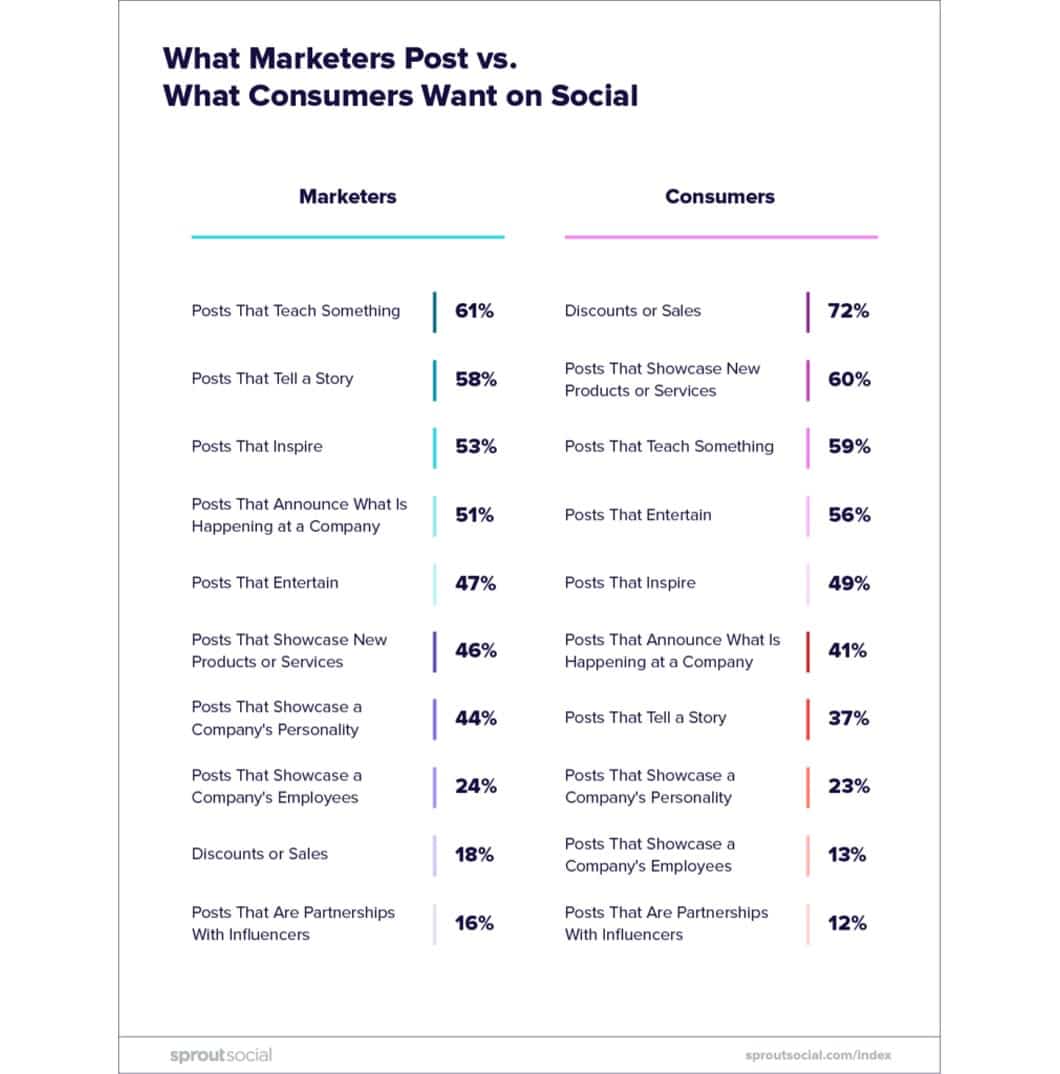Whether you’re brick and mortar, ecommerce, business-to-business (B2B) or business-to-consumer (B2C), you know how the last quarter is. You’ve got Black Friday. You’ve got Cyber Monday. Then you’ve got … nothing.
It’s crickets in terms of sales from January to March. Not surprising, right? The after-holiday shopping sprees are over for the B2C crowd. And the “using up all the budget before the end of the year, so we don’t lose it next year” sprees are over for the B2B crowd.
But it doesn’t have to be this way. You can avoid the dreaded annual sales slump.
We’re letting you in on 6 ways you can rock your first-quarter goals and showing you how to increase sales when business is slow.
-
What’s the Meaning of a Sales Slump?
What defines a sales slump is relative to each company. Maybe a 5% sales decline is a slump to you, or maybe it’s 10% when you start to get worried. A slump is a significant decrease in sales for a particular sales representative or the whole company.
Whatever it is for you, avoid the stress by taking action to combat a slump before it even happens.
1. Go Heavy on Marketing in the First Quarter
As the saying goes: “An ounce of prevention is worth a pound of cure.”
So it’s no surprise that one of the best ways to avoid a first-quarter sales slump is to increase your marketing efforts before January and during the first-quarter stretch. Here are a few ways you can do that.
Focus on Repeat Customers
When sales are slow, consider going all out on email campaigns and paid media, targeting your returning and loyal customer base. Get all the orders you can from your “bread and butter.” At the end of the day, statistics show that 60% of loyal customers make frequent purchases, and 50% purchase more products.
Invest in Paid Ads
During slow periods, paid ads can be highly effective. So hit your ad campaigns hard and get your products out there. According to Google, businesses see an average return on investment of 200% on Google Ads campaigns.
Personalize Marketing
Another way to improve your marketing efforts during a first-quarter slow season is to focus on personalization.
Segmented email campaigns, for example, bring in 760% more revenue, according to data from Campaign Monitor. They command attention in crowded inboxes; sometimes, that second glance is enough to get an open, a click and an order.
Additionally, ensure your social media feeds highlight what your customers want to see. For example, a study by Sprout Social found the No. 1 thing consumers wanted to see from brands on social media was discounts and sale announcements, 72% in fact. However, only 18% of brands post discounts and sales regularly.
Figure out what your customers want. Then honestly evaluate your social media to weed out the content they don’t want to see, even if you think it’s good content.
Retarget Holiday Customers
Combine a few of these strategies to retarget holiday browsers and buyers. For instance, run ads and send personalized emails to those who visited your business in the last quarter of the year.
If you can, focus on specific products or shopping categories the consumer was interested in but didn’t wind up purchasing. Consider offering a discount or incentive to entice them to shop with you post-holiday season.
2. Figure Out How to ‘New Year, New You’ Your Product
This depends a lot on what you’re selling, but if it’s anything that could tie into the New Year, make that the focus of your marketing for the first quarter.
For example, health and wellness: Many people make resolutions to better their eating habits, fitness or mental health at the start of the year, so if your product helps with that, shout it from the rooftops.
This also applies to technology or cool gadgets. Frame your campaign around gearing up for the new year, starting the year off right with the latest tech for work, etc.
Could your business benefit from a boost of capital in the new year?
3. Have a Big Annual Sale in January
Another way to fend off a sales decline in the first quarter? Consider running a promotion in January to create momentum and kickstart the year’s sales. This could be your only sale all year to build up hype with your loyal customers, so they may come to expect it each following year.
While sales can slump a bit in the first quarter, many people also have gift cards or gifted cash from the holidays burning a hole in their pocket. Your big January sale could be the perfect opportunity for them to spend that (and then some) with you.
4. Ask for Referrals
If your company sells services or you acquire most of your business through your sales professional, the first quarter is time to ramp up the outreach to prevent a sales decrease.
Less time signing deals means more time for finding new prospects and booking those first discovery calls and meetings. The easiest way to do that? Ask for referrals.
Referrals should always be one of your sales strategies, especially in slow times. After all, when compared to other marketing channels, it’s estimated that leads from referrals have a 30% higher conversion rate.
Reach out to your best customers and ask them to send you 1-3 contacts or request they pass on your information to their colleagues. You’d be surprised how much people want to help if you simply ask. Don’t forget to follow up if they tell you to ask them another time.
Another great strategy to get referrals is to set up a formal referral reward program, just like an affiliate program. If existing customers refer someone new, they can collect points, get money off their orders, accrue credit or earn any other reward you know would motivate them.
Here are a few other ways you can go about getting more referrals.
Ask for Referrals in Your Email Signature
Here’s an example of a note in an email signature asking for referral business.
Set Up an Automated Referral Program
With an automated referral program, your customers can send out a link automatically registering them as the referrer and giving them credit if someone places an order through their link or code. This works best with ecommerce and product-based businesses but can apply to B2B and services as well. Software like ReferralCandy can help with the logistics of setting this up.
Host a Referral Contest
For example, this can be an internal contest to see which sales representative can get the most leads in a certain time frame. Or you can run an external contest, such as which customer can refer the most leads. Either way, you’re getting top-quality leads fueled by healthy competition.
5. Work on Your Mindset
Ninety-nine percent of sales is a mind game. That’s not an officially researched statistic, but surely it rings true to you, right?
That said, the last way you’d want to come across when trying to close a sale is desperate. You need to project a confident, measured and professional attitude at all times. No one wants to place their trust in someone desperate to get the sale instead of someone who cares about their needs.
Customers want to know you’re on their side and able to provide a solution to their problems. Approach your sales calls from a service perspective: “What is this person’s problem, and how can I help solve it?” Instead of an “I want to close this sale” perspective.
6. Revamp Your Content Marketing
If the first quarter is seeing sales decrease, use it as an opportunity to revamp outdated marketing materials – everything from your website copy and blog posts to any printed materials you hand out to customers, how-to guides or anything else your customers interact with from your company.
If you’re like most companies, content marketing is a huge part of your marketing strategy. Indeed, 39% of marketing teams say they allocate 31%-50% of their budget to content marketing, according to HubSpot.
Ensure your content attracts new prospects and speaks to your existing customers. Getting these materials updated at the beginning of the year can pay off for the rest of the year in terms of more qualified leads and closed deals.
-
How to Perform a Content Audit
1. Create a spreadsheet of all your content channels and pieces.
For example: website, Facebook, Instagram, blog posts, videos, brochures — everything your company has.
2. For website and blog content, find each article and page on your website and list that in the sheet.
You can use a tool such as Web Scraper to automate this.
3. Once you have listed all those pages and posts, track the variables you care about.
“Care about” is a relative term because it depends on your content goals. Do you want to improve your organic search engine optimization ranking? Then you’d track variables such as page title, keywords, keyword ranking, image alt text descriptions, etc.
If your goal is to get more ecommerce sales, then your variables to track could be product links, keywords, images, social shares, calls to action, etc.
4. Analyze and rewrite your content as needed.
The tough part is reworking your content. How you do that will depend on your goal. If you want more ecommerce sales, you could start by editing your calls to action and A/B testing the new variants.
You also could review the images you use in your product pages and blog posts. Are they aesthetically pleasing? Do they showcase your product well? Are they professional and well-lit? Do they fit your brand? If not, book a photographer and do a reshoot.
You get the idea. It’s a long process but worth it.
Sidestep the Sales Slump: Take Action Now
Don’t let a first-quarter sales slump get in your way. If you do these 6 things right, you can improve the customer experience and see increased revenue.
Ramp up your marketing in December and through the first quarter, have a big sale, ask for referrals and, most of all, don’t lose hope. Keep your mindset positive to avoid coming across as desperate for sales (even if you are).
Start the first quarter strong, and you’ll have no problem keeping it that way all year.













